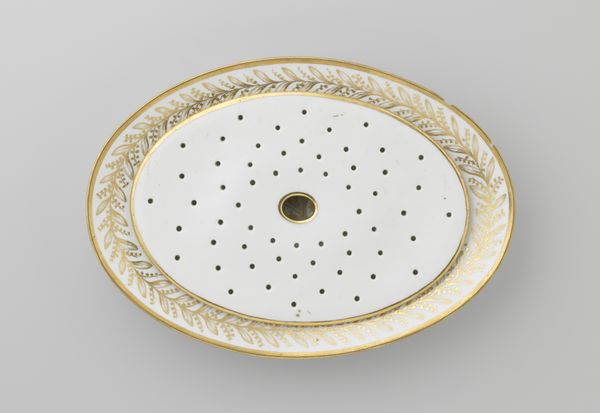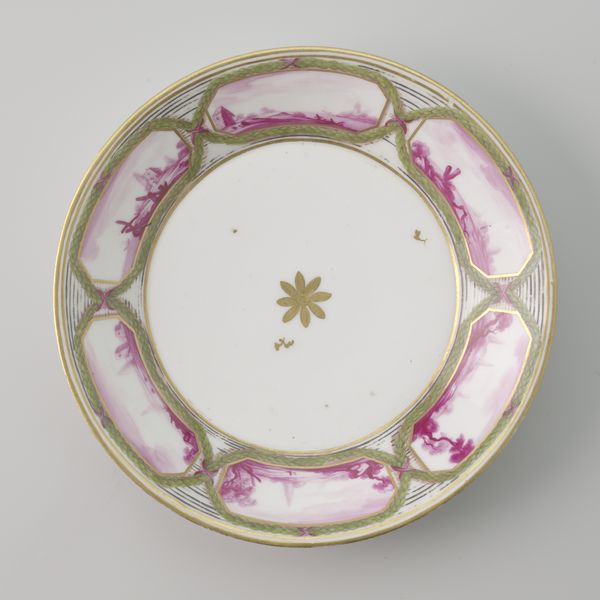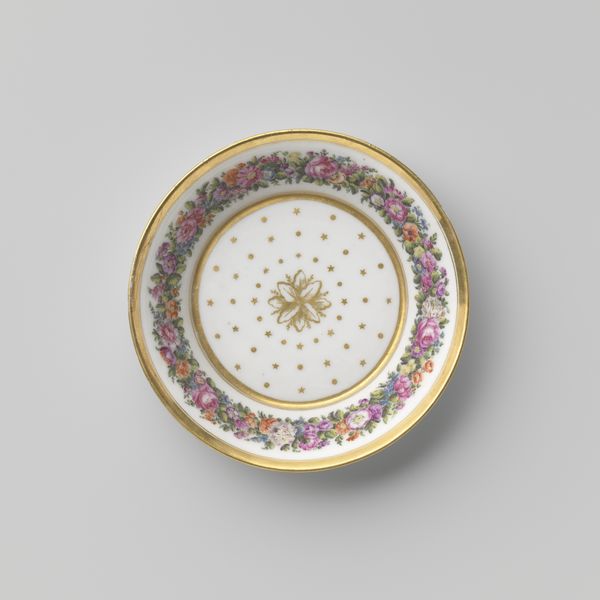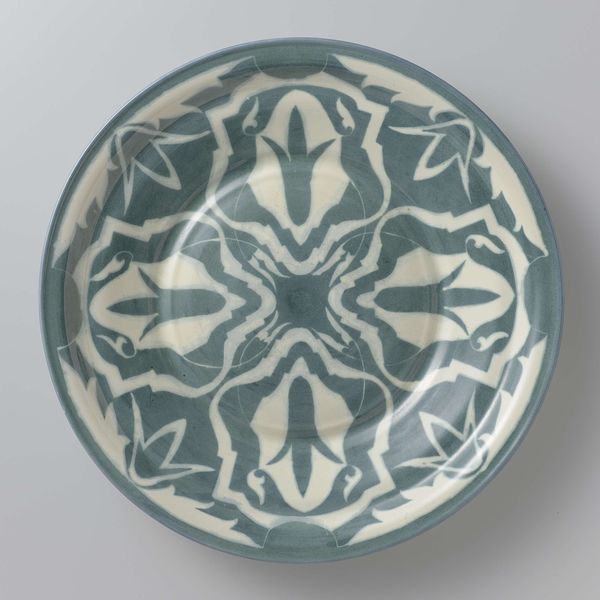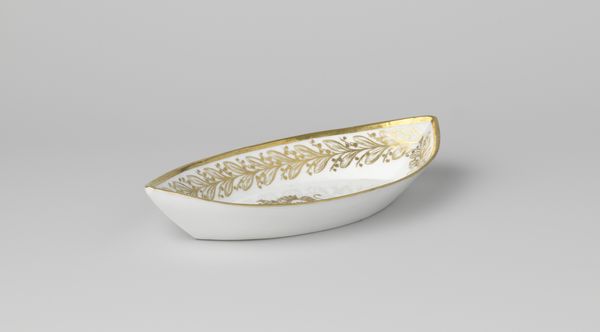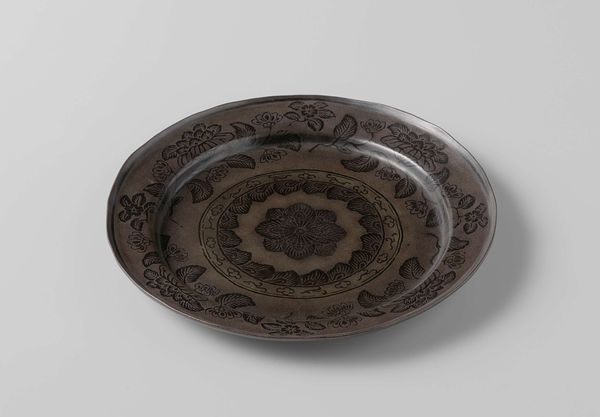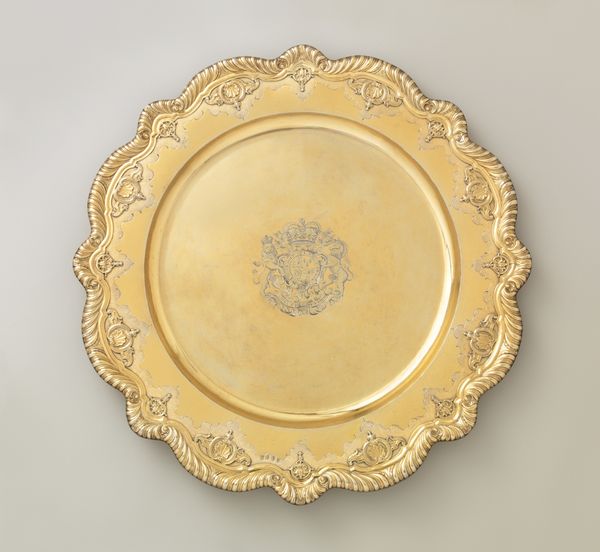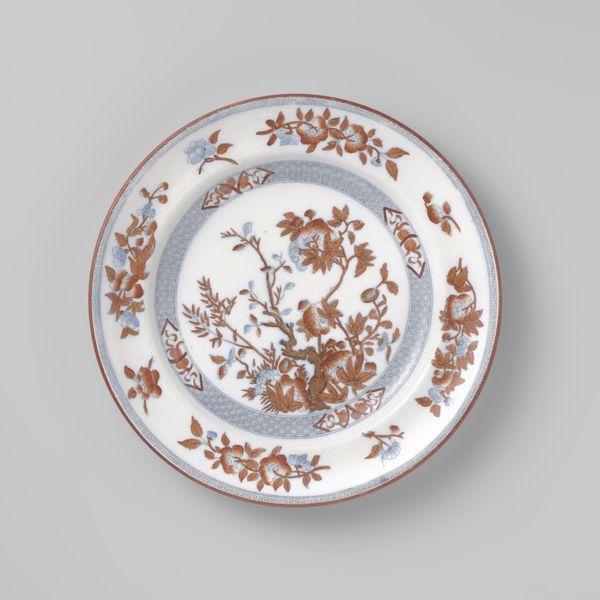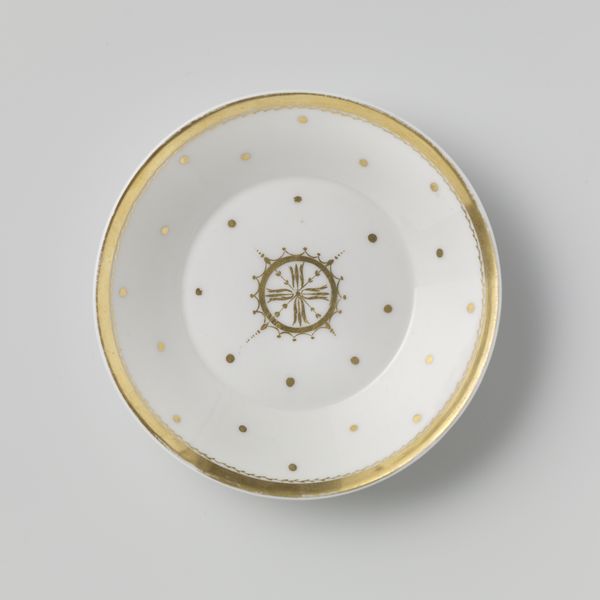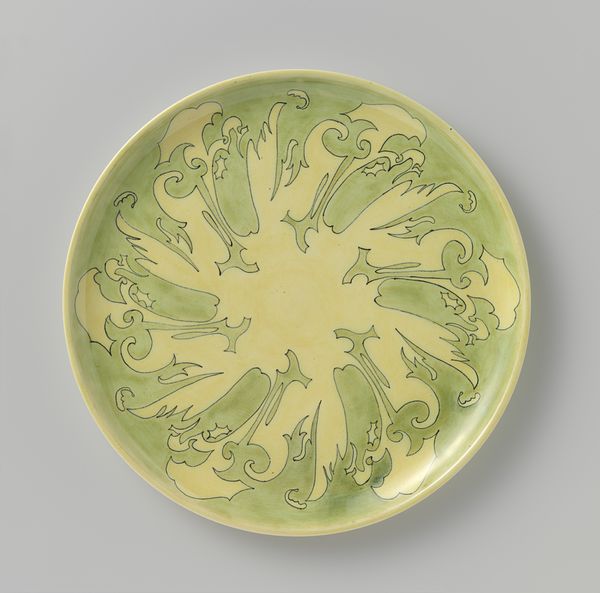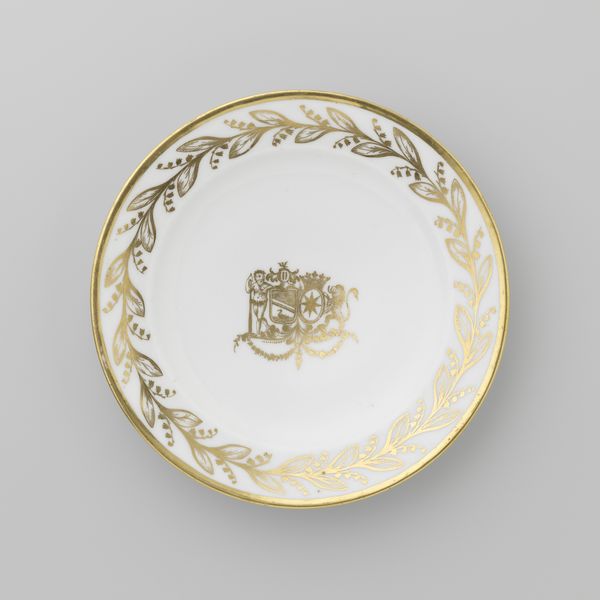
Dimensions: diameter 13.5 cm, height 1.8 cm
Copyright: Rijks Museum: Open Domain
Editor: Here we have an exquisite glass plate from around 1775 to 1800, titled "Schotel van glas met beschildering in goud" - that's "Glass plate with painting in gold" by an anonymous artist. The ornate gilded floral design on transparent glass gives a feeling of delicate opulence. How might we interpret this piece through a social or historical lens? Curator: The extravagance certainly speaks to its era. Think about the Rococo period, deeply intertwined with aristocratic excess, and the exploitation of resources during colonization. It compels us to consider who possessed and enjoyed such items. Was this display of wealth used as a way to enforce a social hierarchy, where only the privileged were afforded the luxury of possessing precious, yet utilitarian items? Editor: So, the beauty and craftsmanship are almost secondary to its role as a symbol of power? Curator: Precisely! The floral motifs, though decorative, could also point to trade routes and the appropriation of natural resources. These plates, symbols of elite dining culture, conceal a much broader history of access and privilege. Think about who profits, and who pays the price for such gilded finery? Editor: That's fascinating. I hadn’t considered how something seemingly innocuous like a decorative plate could be so laden with sociopolitical implications. It also speaks to the ways luxury goods reinforced the social standing of elites, right? Curator: Exactly! We can consider this plate as a conversation starter. What are our modern gilded objects? What labor went into them? Who benefits, and how do they perpetuate existing structures? Editor: I guess I was seeing the shimmer, not the systemic context. This perspective completely changes how I view objects in museums. Curator: It's about moving past aesthetic appreciation to critically examining the conditions of its creation and circulation. To engage with the object, and the systems it represents.
Comments
No comments
Be the first to comment and join the conversation on the ultimate creative platform.
